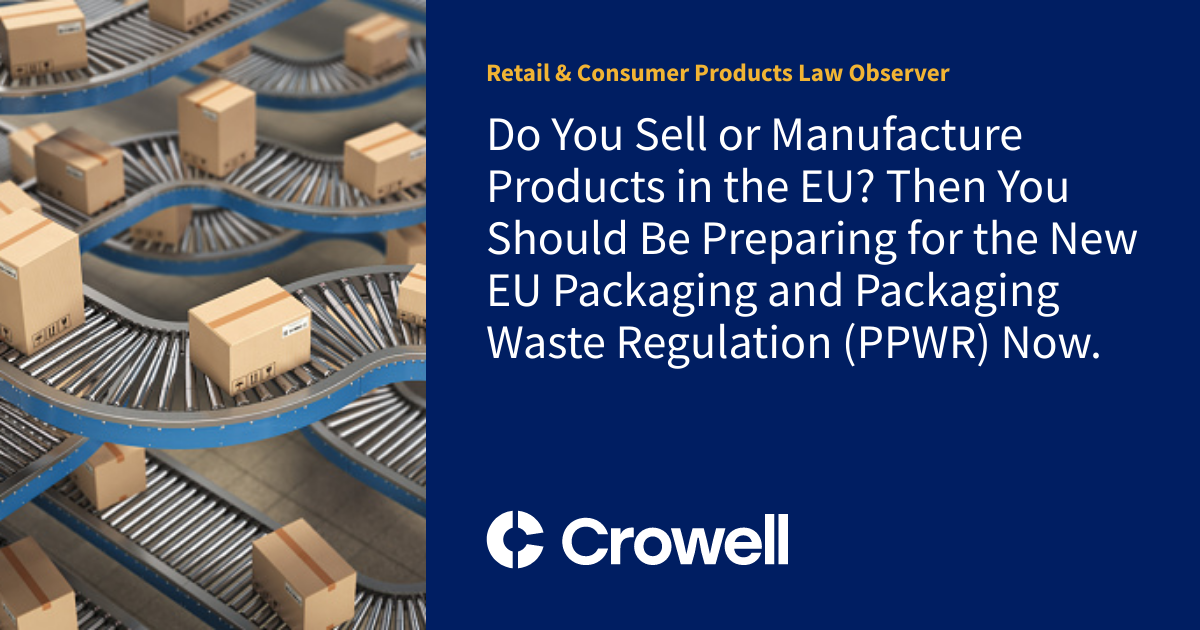The forthcoming European Union’s Packaging and Packaging Waste Regulation (PPWR) promises a seismic shift in the packaging industry that businesses must prepare for now to avoid cataclysmic disruptions and penalties down the line. The PPWR, which will repeal and replace the existing Packaging & Packaging Waste Directive (the PPWD), is currently on the home straight and is poised for adoption in late 2024 or early 2025.
In line with the global push towards a green future, the PPWR is anchored in the goals outlined by the European Green Deal, the Circular Economy Action Plan, and the Plastics Strategy. Its principal objective is to ensure that all packaging and related products on the EU market are safe, sustainable, and compliant with a slew of regulations.
A notable shift with the PPWR is its emphasis on preventing packaging waste. By regulating the entire life cycle of packaging products, from production to disposal, the PPWR is expected to serve as a critical tool in achieving a zero-waste circular economy.
Among the new laws that businesses have to reconcile with are legal targets and compulsory requirements that many industry experts consider ambitious. For instance, the PPWR demands that all packaging is recyclable and contains a certain proportion of recycled content by specific deadlines. By 2030, packaging must adhere to ‘design for recycling’ requirements, followed by ‘recyclability at scale’ requirements by 2035. Packaging materials have to contain a considerable amount of recycled content – generally 55% for most materials, except for wood, which is set at 30%.
Notably, the PPWR takes a hardline stance against wasteful packaging. It aims to eliminate unnecessary packaging, especially those created to entice consumers to purchase more products rather than to protect or store them safely. For instance, operators that fill packaging in grouped packaging, transport packaging, or e-commerce packaging will have to ensure that the empty space ratio does not exceed 50%.
The PPWR also beefs up prohibitions on harmful substances in packaging, building on the existing injunctions already in place under the PPWD. The new laws will restrict the use of substances such as PFAS above specific thresholds in food contact materials, heavy metals, and hexavalent chromium.
Beyond regulations on recyclability and harmful substances, the PPWR introduces elements such as Re-use targets, Harmonized labelling system, Conformity assessment requirements, and the Extended Producer Responsibility (EPR) schemes. Each of these elements presents new challenges and businesses must now begin to strategize and prepare for an inevitable shift in the packaging sector.
As such, companies need to initially identify which products they produce or use are within the PPWR’s ambit. Strategic plans should then follow on each product complying with the PPWR by the requisite deadlines – or replacing them with products that meet the PPWR’s guidelines.
Given this impending sea change, businesses need to engage with their supply chain and minimize the risk of any disruption of continued supply, including obtaining guarantees, warranties, indemnities from suppliers, and imposing requirements to notify companies downstream for unintended supply of materials containing substances of concern, etc.
While the road ahead poses indeed a challenge, businesses that embrace preparation and proactive measures will likely be better positioned to navigate the new regulatory landscape and steer towards a sustainable packaging future.





